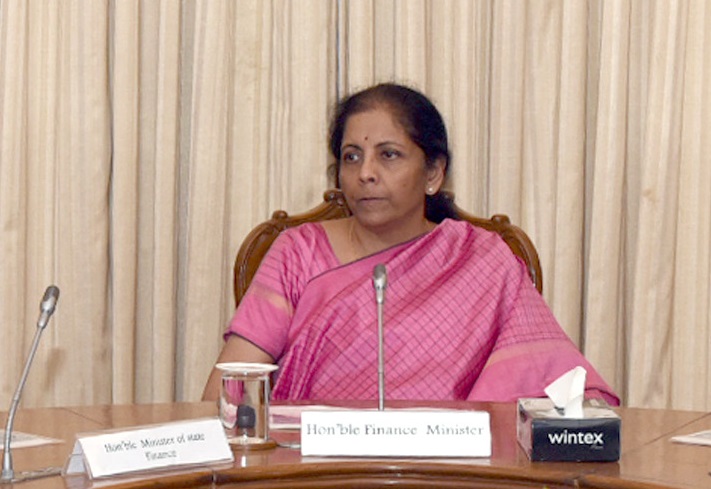The second term of Prime Minister Narendra Modi began on May 30, 2019. The Union Budget was presented on July 5, 2019 with several new initiatives, in addition to those announced earlier on February 1, 2019. The performance of the economy in the first quarter, April to June, and now in second quarter has been disappointing.
The GDP data released by the government on November 29 for July-September quarter reveal that India’s growth rate has declined from 7.5% in 2018 to 4.5% in 2019. The growth rate for the April-June quarter was also low, declining from 8% in 2018 to 5% in 2019. Combined, for April to September of 2019, growth has declined to 4.8% from 7.5% during the comparable in 2018. Interestingly, decline in growth during the July-September quarter has been recorded in all sectors except public administration, defence and other services. The worst performer was manufacturing with growth rate declining from 6.9% in 2018 to (-)1%. Similarly, growth in construction activity declined form 9.1% in April-September 2018 to 4.6% during the same period in 2019. Gross fixed capital formation, exports and imports have steadily declined as the ratio of GDP. Private consumption expenditure during April to September 2019, as a ratio of GDP, is lower than that in similar six months in 2018, while government consumption expenditure is higher.
ALSO READ: November GST collection grows 6%, brings cheer after dismal GDP figure
The performance of core industries was also not encouraging during April-October 2019 with production of fertilisers, steel and electricity increasing while coal, crude oil, natural gas, refinery products, and cement recording negative growth. On the positive side, each of these core industries saw and increase in output during October compared with the September figures.
In view of declining growth rate of the economy in first quarter, the government had announced various measures to boost growth such as a cut in corporate tax rates to 22% for existing and 15% for new domestic manufacturing companies, mergers of banks to improve the health of the banking sector, infusion of Rs 70,000 crore capital into PSU banks, huge investment in new infrastructure projects, and strategic disinvestment in some central public sector firms.
Should India Panic? Select Suggestions
First, quarterly estimates are indicative and should be interpreted carefully. There is no need for panic as the global economy is also suffering from a major slowdown induced by the US-China trade war, uncertainty around Brexit, ageing demographics in advanced countries, and other geopolitical tensions. The growth estimate for the global economy has also been scaled down to 3%, slowest since the global financial crisis in the last decade.
Second, the government could consider more fiscal expansion, given the current economic slowdown. The recent measures announced by the government was supported by its final consumption expenditure. The sanctity of 3% fiscal deficit as percentage of the GDP is not important during difficult economic conditions. Also, India’s debt to GDP ratio is among the lowest in the world, for non-commodity rich/exporting countries, implying that there is still some fiscal space available.
Third, the monetary policy will have to do more heavy-duty work and the rate cut expected on December 5, 2019 should be more than 25 basis points. An accommodative monetary policy can help revive the growth impulse.
Fourth, the government could consider a pause button, for some time, until the economy stabilises, in introducing more reforms. In fact, the next two years should be used to consolidate the reforms already undertaken.
Fifth, the Union Budget is just 2 months away. Given the complexity of the continent-size Indian economy, with various sub-economies within it, the government could consider constituting a group of economists to diagnose, examine and recommend, policy initiatives that can help the economy grow faster than 9%, its potential growth rate. The domestic economy is vast with untapped hinterland having substantial purchasing power. The inward looking policy can help revive the growth rate.
Sixth, the crowded shopping malls, wedding banquets and airports show that the country has abundant purchasing power which is not translating into GDP numbers. This could be because of the rise in unaccounted for money which needs to be examined.
Finally, given the dismal growth in manufacturing and construction, it can be construed that private sector is not participating in the growth initiative. The addition of one million people in the work force every month would imply the need for a massive job creation exercise which cannot be completed without the active participation of the private sector. Therefore, the government may like to initiate a dialogue with the private sector.
Conclusion
To conclude, the healthy tax collection under GST for the month of November 2019 clearly shows that the economy is vibrant. The government initiatives of August and September 2019, with some gestation period, should start showing results in the second half of the year that coincides with the festive season, which hopefully will also lead to improve sentiments. The third quarter corporate results should show a rebound, given the forward-looking indicators contained in the Sensex and Nifty.

